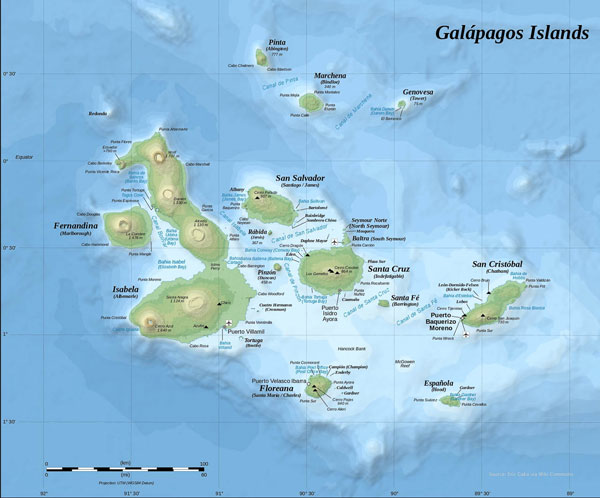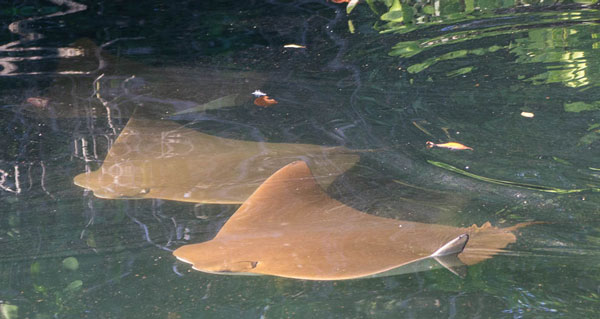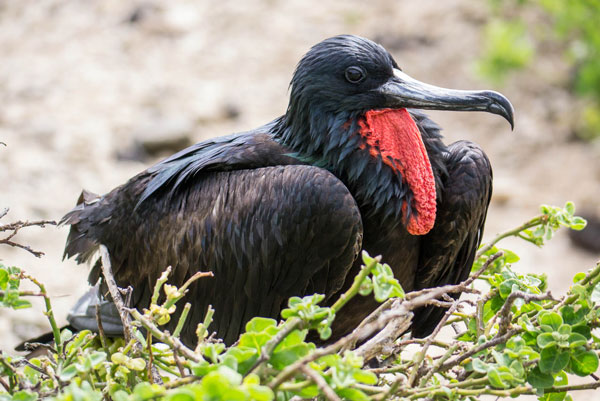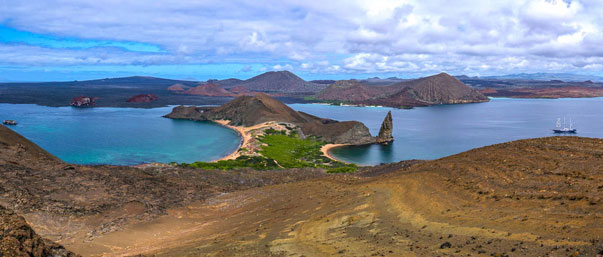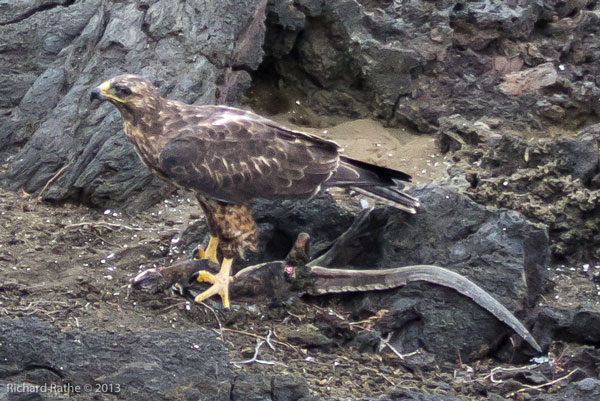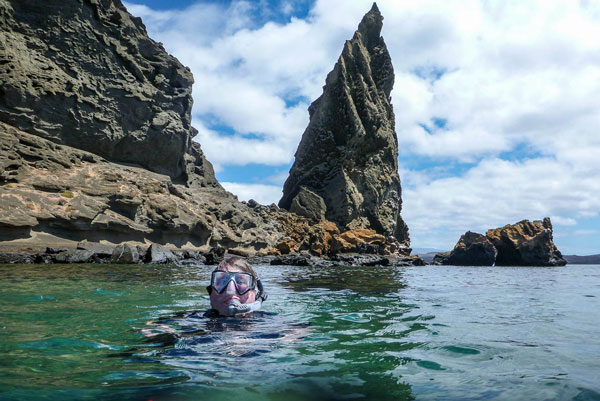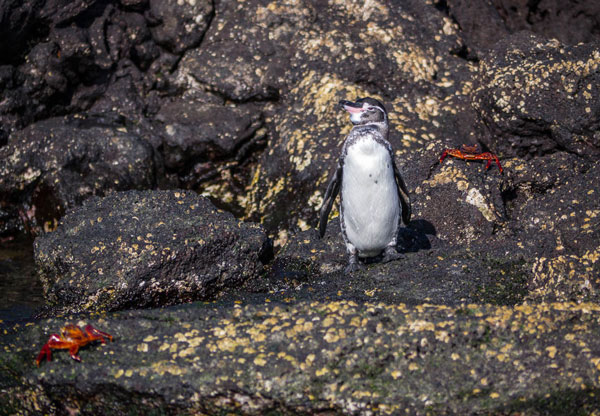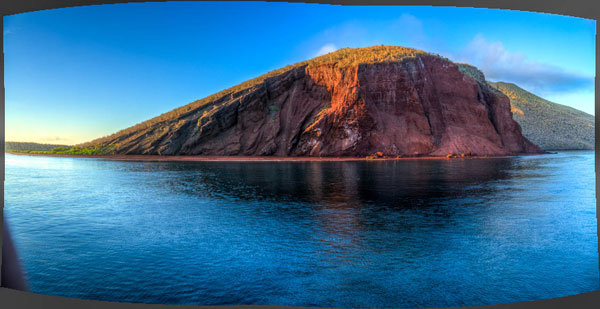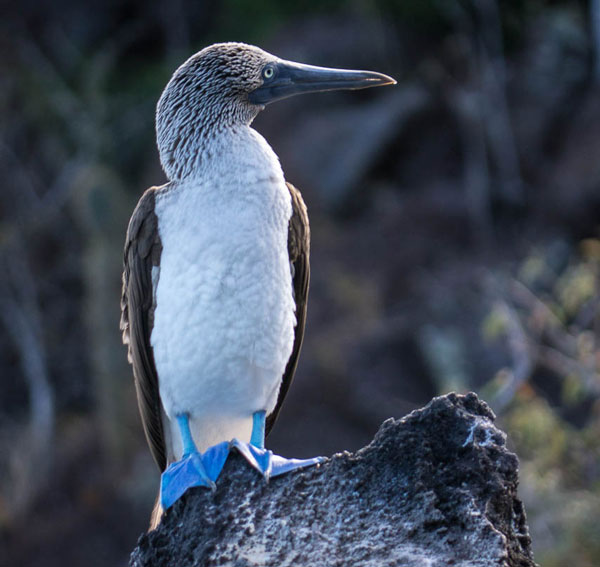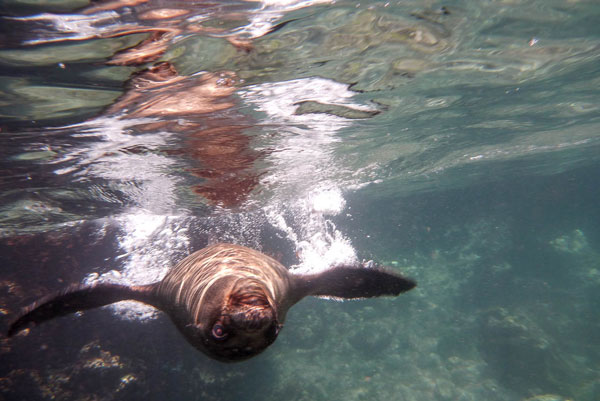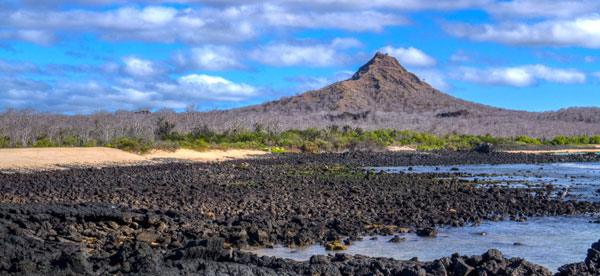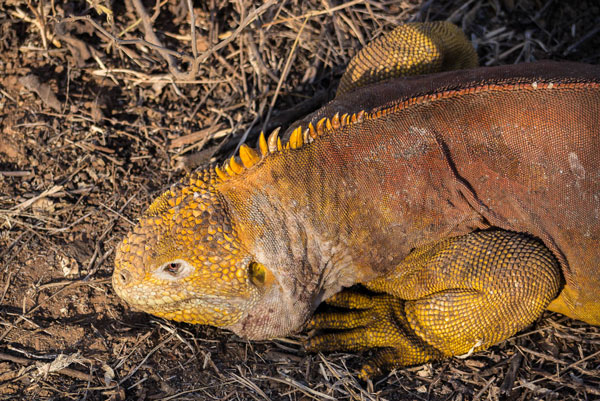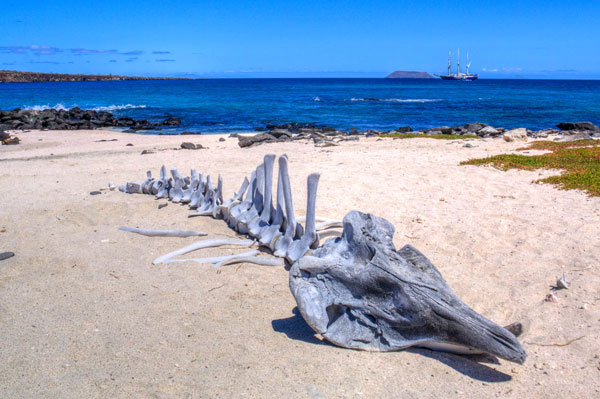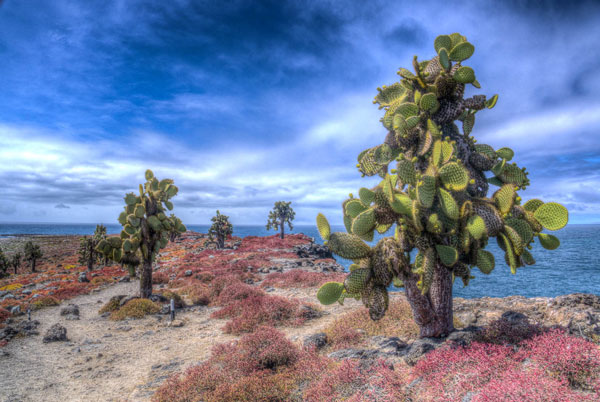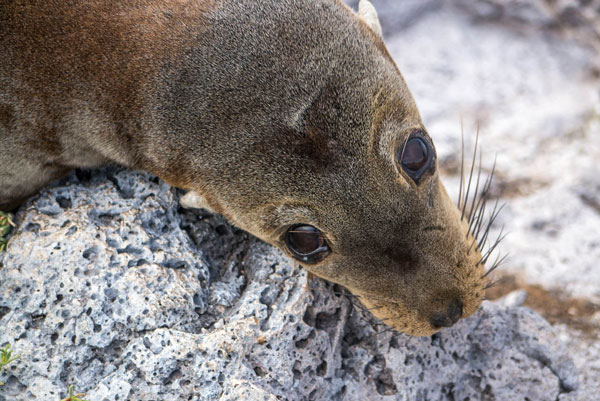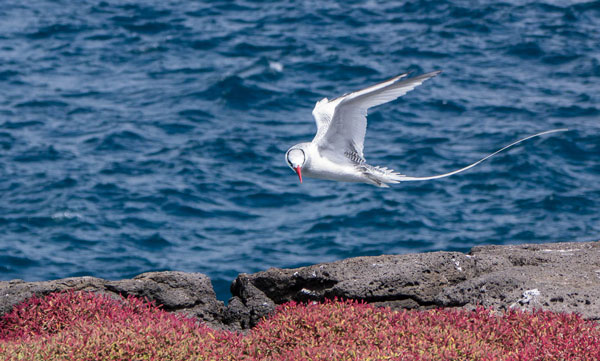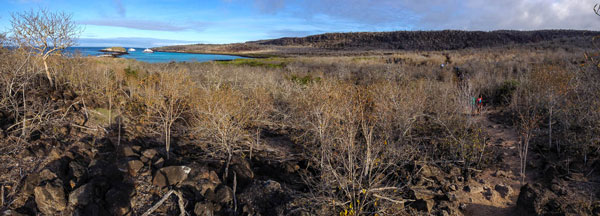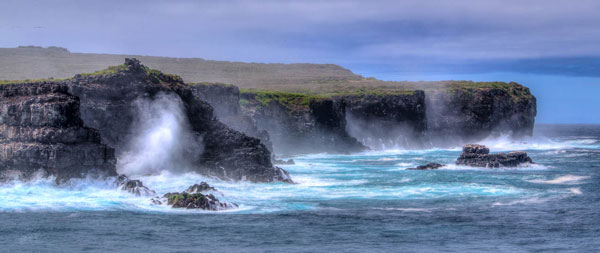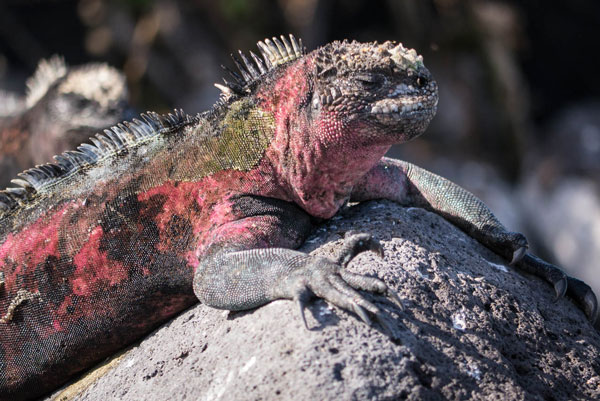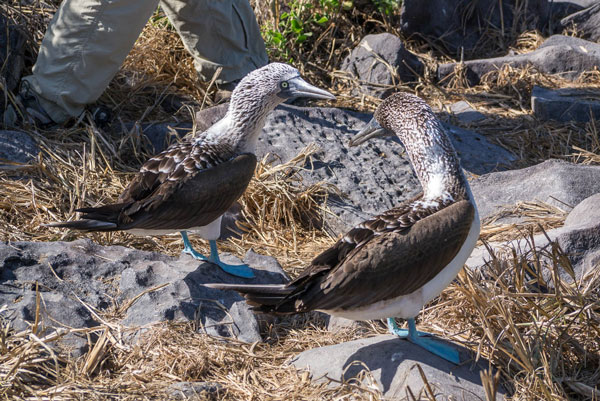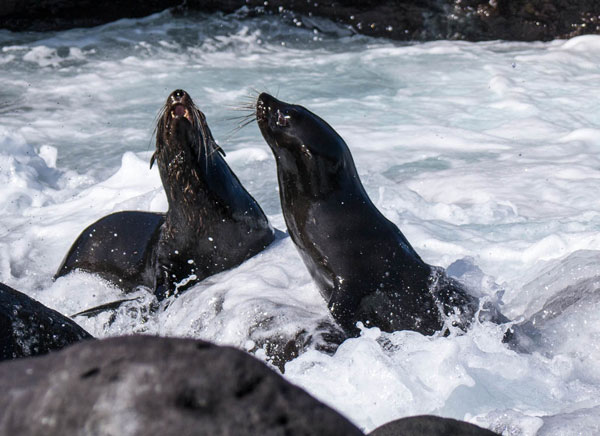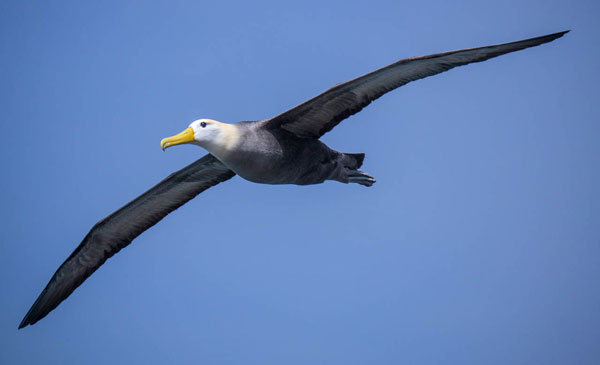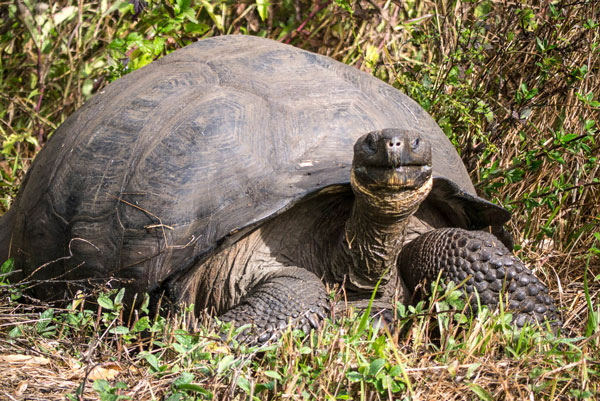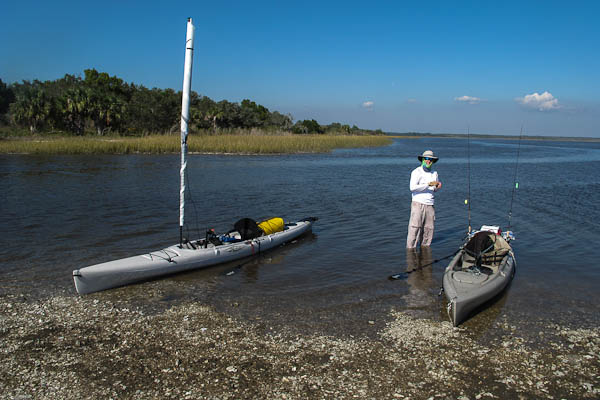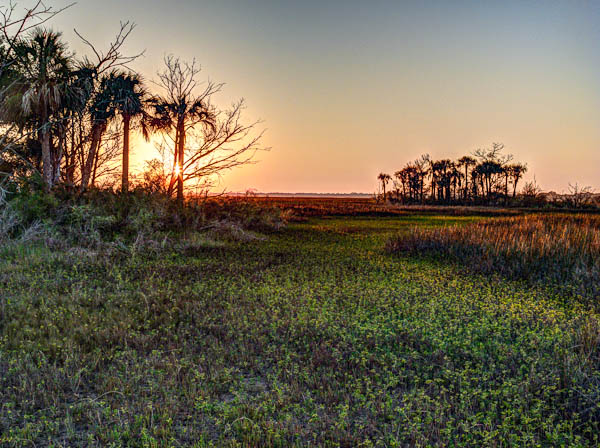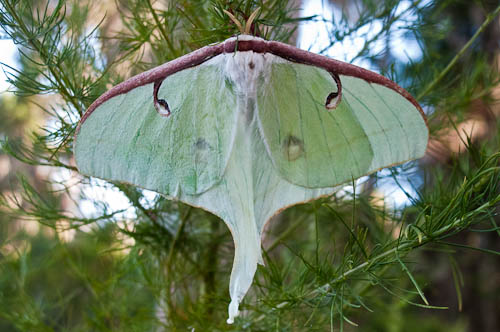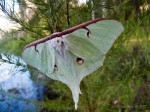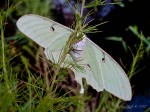We recently visited Ecuador and the Galapagos Islands. After many hours of editing the first complete Gallery of Photos is ready. I will add to this post periodically. Here is my overview of selected highlights…
We arrived about noon and proceeded to nearby Black Turtle Bay where we saw Sea Turtles, Sharks, and Golden Rays amongst the mangroves. If you have enough bandwidth you should also view the 12 Minute Video I’ve prepared to see them in motion!
After an overnight cruise we awoke the next day anchored in Darwin Bay on Genovesa Island (basically the flooded caldera of an extinct volcano!). After a wet landing on a sandy beach we had our first encounters with Sea Lions and nesting Frigate Birds. (With many, many more to come!)
After snorkeling and lunch we climbed a narrow stairway to reach the top of the island. Over one million birds nest here according to our guide. We saw thousands of Petrels, Shearwaters, Frigate Birds, and Boobies in the air and on their nests. We also saw their top predator, the Short-Eared Owl. [I should note that the panoramas below were taken with my iPhone 4s, which did a remarkable job under the circumstances! See Video to get a feel for the thousands of birds flying overhead!]
We again cruised overnight and woke up anchored in Sullivan Bay near the iconic Pinnacle Rock of Bartolomé Island. The landscape is stark and strangely beautiful almost beyond words. We first climbed to the Bartolomé summit for one of the most famous views in all of the Galápagos. We were standing on an old cinder cone almost completely barren of plants. In the near distance was the pinnacle and our barkentine sailboat the Mary Anne. Beyond a narrow channel was Santiago Island with black lava flows and red rock outcrops. Spectacular!!
On the ascent I spotted a Galápagos Hawk feeding on an iguana…
We then took a snorkel around the pinnacle and came across Galápagos Penquins sunning themselves on the rocks…
After lunch we crossed the narrow passage and landed on Santiago Island at the site of extensive lava flows dating from the 1800s. We walked for more than two miles over black Pāhoehoe Lava with endless patterns, swirls and cracks.
The next day we arrived at Rábida Island with its prominent red cliff and red sand beach. We took an extended dingy ride along the coast (to the right in the photo below). The hillsides were covered with dormant Sandalwood Trees and Prickly Pear (Opuntia) Cactus. [See Video]
This was our first encounter with the quintessential Blue-Footed Boobie, a magnificent bird! There were also Marine Iguanas, Sally Lightfoot Crabs and Sea Lions playing in the surf.
We went for a hike around a point overlooking a blue water bay, and then went snorkeling.
Several Sea Lion Pups decided we were good targets for playing chicken! [See Video]
In the afternoon we landed at a point called Cerro Dragón.
The “dragons” in this case are large yellow Land Iguanas. We also encountered a lovely Large-Billed Flycatcher. It was so unafraid it landed on a branch about four feet from me!
As the sun got low in the west we encountered a pair of Flamingos busily feeding in a small lagoon. [See Video]
The next day we spent traveling around in the dingy, cruising the coastline and landing on a small island called Mosquera, which is a sea lion resort! [See Video]
Someone had gathered the bones of a small Beaked Whale and assembled them on the beach.
Next day we moved down the coast of Santa Cruz and landed on the small South Plaza Island. This is a wildlife and photographic paradise! Sea Lions, Marine and Land Iguanas, Cactus Finches, Mocking Birds, Swallow-Tailed Gulls… you name it!
The island gently slopes from a shoreline to a forty foot cliff. There we saw several Red-Billed Tropicbirds as they flew in the updrafts close to the cliff edge.
That afternoon we proceeded south to Santa Fé Island for a different species of Land Iguana, Tree-Sized Cactus and a large Sea Lion Colony.
Our final day on the water brought us to Española Island with its high cliffs and unique residents.
The Marine Iguanas were the most colorful we’d seen…
A pair of Blue-Footed Boobies did their courtship dance on the trail as we walked past…
Young Fur Sea Lions cavorted in the surf…
And finally the Waved Albatross courting and nesting along the trail… [See Video]
The next day we got in a van and drove through the Santa Cruz Highlands back to the airport. Along the way we had the opportunity to visit a water hole with several Giant Tortoises lounging in it. A perfect coda to an outstanding trip!

